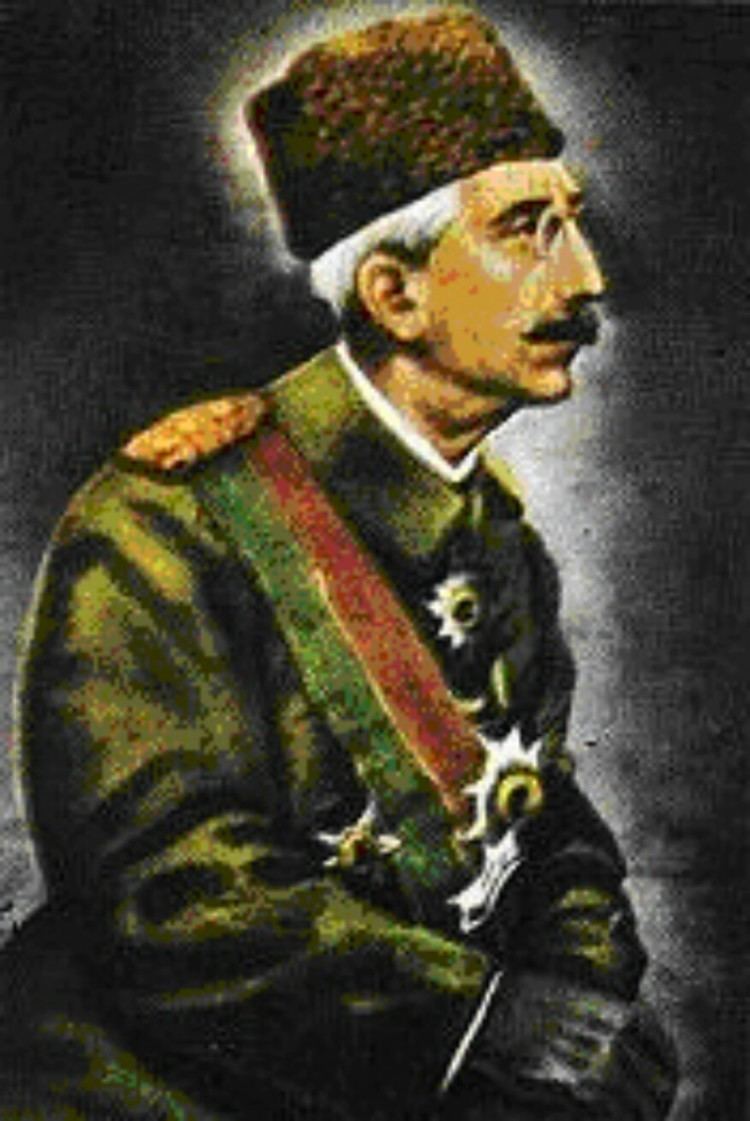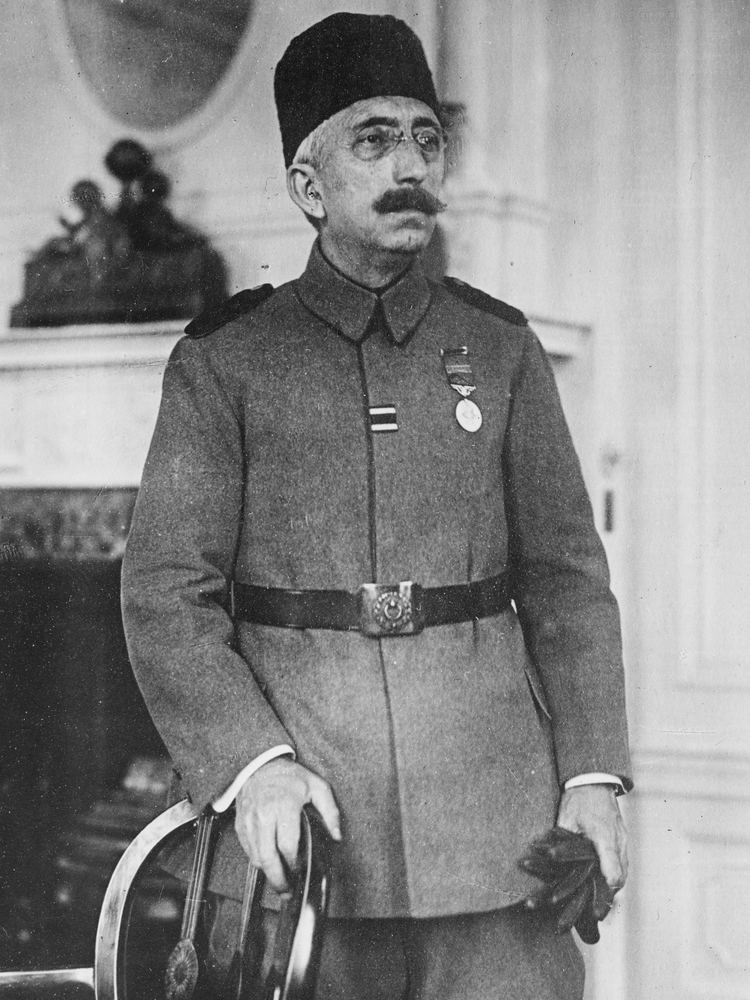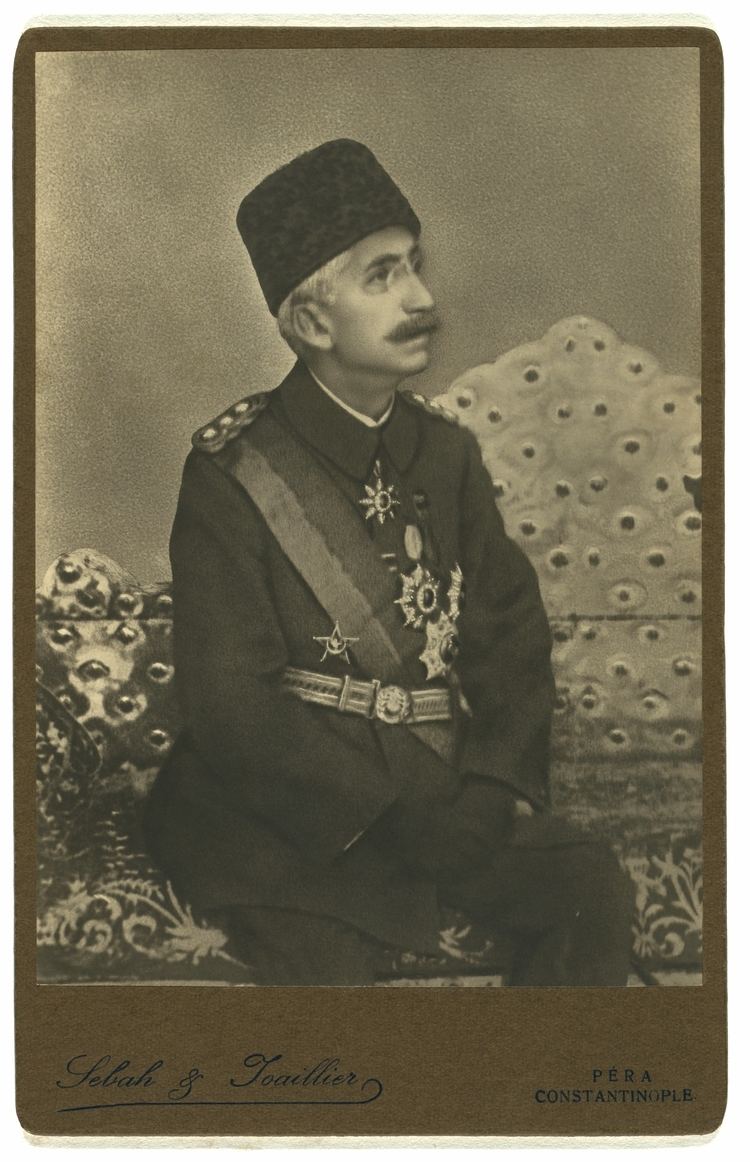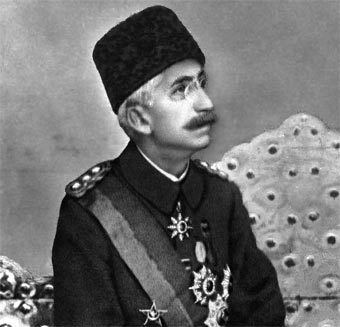Sword girding 4 July 1918 Role Sultan Name Mehmed VI | Successor Sultanate abolished Grandchildren Fatma Neslisah | |
 | ||
Reign 3 July 1918 – 1 November 1922 Grand Viziers See listMehmed Talaat PashaAhmed Izzet PashaAhmet Tevfik PashaDamat Ferid PashaAli Riza PashaSalih Hulusi Pasha Reign 3 July 1918 – 19 November 1922 Spouse Nevzad Hanimefendi (m. 1921–1926) Children Rukiye Sabiha Sultan, Fatma Ulviye Sultan, Mehmed Ertugrul Efendi, Fenire Sultan Similar People Abdulmecid I, Abdul Hamid II, Mehmed V, Fatma Neslisah, Murad V | ||
Sultan Vahideddin (Mehmed VI) in carriage. Turkish leader Enver Pasha with Kaiser...HD Stock Footage
Mehmed VI (Ottoman Turkish: محمد السادس Meḥmed-i sâdis, وحيد الدين Vahideddin, Turkish: Vahideddin or VI. Mehmed), who is also known as Şahbaba (meaning "Emperor-father") among his relatives, (14 January 1861 – 16 May 1926) was the 36th and last Sultan of the Ottoman Empire, reigning from 1918 to 1922. The brother of Mehmed V, he acceded to the throne as the eldest male member of the House of Osman after the 1916 suicide of Abdülaziz's son Şehzade Yusuf Izzeddin, the heir to the throne. He was girded with the Sword of Osman on 4 July 1918, as the thirty-sixth padishah. His father was Sultan Abdülmecid I and mother was Gülüstü Hanım (1830 – 1865), an ethnic Abkhazian, daughter of Prince Tahir Bey Çaçba and his wife Afişe Lakerba, originally named Fatma Çaçba. Mehmed was removed from the throne when the Ottoman sultanate was abolished in 1922.
Contents
- Sultan Vahideddin Mehmed VI in carriage Turkish leader Enver Pasha with KaiserHD Stock Footage
- Crowning of mehmed vi as last ottoman sultan
- Biography
- Reign
- Exile and death
- Family
- References

Crowning of mehmed vi as last ottoman sultan
Biography

He was born in the Dolmabahçe Palace, in Istanbul.
Reign

The First World War was a disaster for the Ottoman Empire. British and allied forces had conquered Baghdad, Damascus, and Jerusalem during the war and most of the Ottoman Empire was divided amongst the European allies. At the San Remo conference of April 1920, the French were granted a mandate over Syria and the British were granted one over Palestine and Mesopotamia. On 10 August 1920, Mehmed's representatives signed the Treaty of Sèvres, which recognised the mandates and recognised Hejaz as an independent state.

Turkish nationalists rejected the settlement by the Sultan's four signatories. A new government, the Turkish Grand National Assembly, under the leadership of Mustafa Kemal (Atatürk) was formed on 23 April 1920, in Ankara (then known as Angora). The new government denounced the rule of Mehmed VI and the command of Süleyman Şefik Pasha who was in charge of the Kuvâ-i İnzibâtiyye, as a result a temporary constitution was drafted.
Exile and death
The Grand National Assembly of Turkey abolished the Sultanate on 1 November 1922, and Mehmed VI was expelled from Constantinople. Leaving aboard the British warship Malaya on 17 November, he went into exile in Malta; Mehmed later lived on the Italian Riviera.
On 19 November 1922, Mehmed's first cousin and heir Abdülmecid Efendi was elected Caliph, becoming the new head of the Imperial House of Osman as Abdülmecid II before the Caliphate was abolished by the Turkish Grand National Assembly in 1924.
Mehmed died on 16 May 1926 in Sanremo, Italy, and was buried at the Tekkiye Mosque of Sultan Suleiman the Magnificent in Damascus.
Family
Sultan Mehmed VI married five times:
